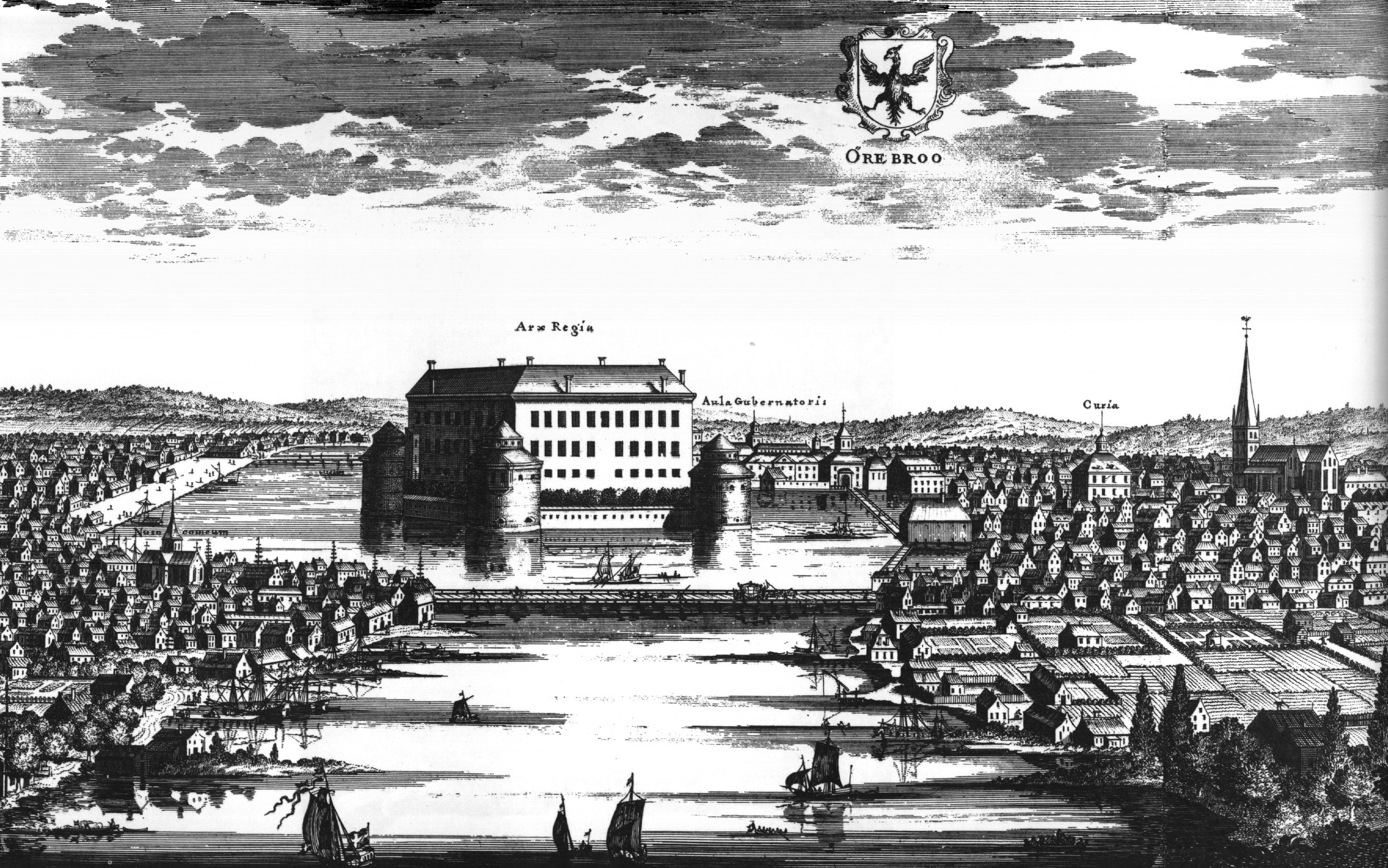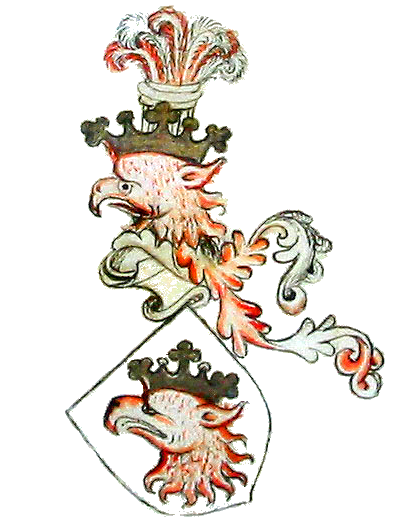|
Charlotte Wahlström
Charlotte Constance Wahlström (17 November 1849 – 22 February 1924) was a Swedish painter. Biography Wahlström was born in the parish of Svärta in Södermanland, Sweden. She was the daughter of Anders Wahlström and Carolina Setterberg. She attended the Royal Swedish Academy of Fine Arts in Stockholm. She traveled on a scholarship to Paris, Brittany in 1885 and later to Germany, the Netherlands and Belgium. In 1889, she spent a period in the artist colony in Barbizon. Wahlström exhibited her work at the Palace of Fine Arts at the 1893 World's Columbian Exposition in Chicago, Illinois. She was awarded a bronze medal at the Louisiana Purchase Exposition at St. Louis, Missouri in 1904. Wahlström died in 1924 in Stockholm and was buried at Norra begravningsplatsen. Her art is characterized by prominent landscapes often with motifs from Skåne. Wahlström is represented at the Gothenburg Art Museum and the Nationalmuseum in Stockholm as well as at museums in Östergötlan ... [...More Info...] [...Related Items...] OR: [Wikipedia] [Google] [Baidu] |
Painting
Painting is the practice of applying paint, pigment, color or other medium to a solid surface (called the "matrix" or "support"). The medium is commonly applied to the base with a brush, but other implements, such as knives, sponges, and airbrushes, can be used. In art, the term ''painting ''describes both the act and the result of the action (the final work is called "a painting"). The support for paintings includes such surfaces as walls, paper, canvas, wood, glass, lacquer, pottery, leaf, copper and concrete, and the painting may incorporate multiple other materials, including sand, clay, paper, plaster, gold leaf, and even whole objects. Painting is an important form in the visual arts, bringing in elements such as drawing, Composition (visual arts), composition, gesture (as in gestural painting), narrative, narration (as in narrative art), and abstraction (as in abstract art). Paintings can be naturalistic and representational (as in still life and landscape art, lands ... [...More Info...] [...Related Items...] OR: [Wikipedia] [Google] [Baidu] |
Gothenburg Art Museum
Gothenburg Museum of Art ( sv, Göteborgs konstmuseum) is located at Götaplatsen in Gothenburg, Sweden. It claims to be the third largest art museum in Sweden by size of its collection. Collections The museum holds the world's finest collection of late 19th century Nordic art. A highlight is the lavishly decorated Fürstenberg Gallery, named after a leading Gothenburg art donor, Pontus Fürstenberg and his wife Göthilda. Among the artists showcased are P.S. Krøyer, Carl Larsson, Bruno Liljefors, Edvard Munch, and Anders Zorn. The museum also houses older and contemporary art, both Nordic and international. The collection includes, for example, Monet, Picasso and Rembrandt. The Museum has been awarded three stars in the Michelin Green Guide (Green Guide Scandinavia). Architecture The museum building was designed for the Gothenburg Exhibition (''Jubileumsutställningen i Göteborg'') in 1923 by architect Sigfrid Ericson (1879-1958). The eastern extension was added 1966 ... [...More Info...] [...Related Items...] OR: [Wikipedia] [Google] [Baidu] |
Burials At Norra Begravningsplatsen
Burial, also known as interment or inhumation, is a method of final disposition whereby a dead body is placed into the ground, sometimes with objects. This is usually accomplished by excavating a pit or trench, placing the deceased and objects in it, and covering it over. A funeral is a ceremony that accompanies the final disposition. Humans have been burying their dead since shortly after the origin of the species. Burial is often seen as indicating respect for the dead. It has been used to prevent the odor of decay, to give family members closure and prevent them from witnessing the decomposition of their loved ones, and in many cultures it has been seen as a necessary step for the deceased to enter the afterlife or to give back to the cycle of life. Methods of burial may be heavily ritualized and can include natural burial (sometimes called "green burial"); embalming or mummification; and the use of containers for the dead, such as shrouds, coffins, grave liners, a ... [...More Info...] [...Related Items...] OR: [Wikipedia] [Google] [Baidu] |
19th-century Swedish Painters
The 19th (nineteenth) century began on 1 January 1801 ( MDCCCI), and ended on 31 December 1900 ( MCM). The 19th century was the ninth century of the 2nd millennium. The 19th century was characterized by vast social upheaval. Slavery was abolished in much of Europe and the Americas. The First Industrial Revolution, though it began in the late 18th century, expanding beyond its British homeland for the first time during this century, particularly remaking the economies and societies of the Low Countries, the Rhineland, Northern Italy, and the Northeastern United States. A few decades later, the Second Industrial Revolution led to ever more massive urbanization and much higher levels of productivity, profit, and prosperity, a pattern that continued into the 20th century. The Islamic gunpowder empires fell into decline and European imperialism brought much of South Asia, Southeast Asia, and almost all of Africa under colonial rule. It was also marked by the collapse of the l ... [...More Info...] [...Related Items...] OR: [Wikipedia] [Google] [Baidu] |
People From Nyköping Municipality
A person ( : people) is a being that has certain capacities or attributes such as reason, morality, consciousness or self-consciousness, and being a part of a culturally established form of social relations such as kinship, ownership of property, or legal responsibility. The defining features of personhood and, consequently, what makes a person count as a person, differ widely among cultures and contexts. In addition to the question of personhood, of what makes a being count as a person to begin with, there are further questions about personal identity and self: both about what makes any particular person that particular person instead of another, and about what makes a person at one time the same person as they were or will be at another time despite any intervening changes. The plural form " people" is often used to refer to an entire nation or ethnic group (as in "a people"), and this was the original meaning of the word; it subsequently acquired its use as a plural f ... [...More Info...] [...Related Items...] OR: [Wikipedia] [Google] [Baidu] |
1924 Deaths
Nineteen or 19 may refer to: * 19 (number), the natural number following 18 and preceding 20 * one of the years 19 BC, AD 19, 1919, 2019 Films * ''19'' (film), a 2001 Japanese film * ''Nineteen'' (film), a 1987 science fiction film Music * 19 (band), a Japanese pop music duo Albums * ''19'' (Adele album), 2008 * ''19'', a 2003 album by Alsou * ''19'', a 2006 album by Evan Yo * ''19'', a 2018 album by MHD * ''19'', one half of the double album '' 63/19'' by Kool A.D. * '' Number Nineteen'', a 1971 album by American jazz pianist Mal Waldron * ''XIX'' (EP), a 2019 EP by 1the9 Songs * "19" (song), a 1985 song by British musician Paul Hardcastle. * "Nineteen", a song by Bad4Good from the 1992 album ''Refugee'' * "Nineteen", a song by Karma to Burn from the 2001 album ''Almost Heathen''. * "Nineteen" (song), a 2007 song by American singer Billy Ray Cyrus. * "Nineteen", a song by Tegan and Sara from the 2007 album '' The Con''. * "XIX" (song), a 2014 song by ... [...More Info...] [...Related Items...] OR: [Wikipedia] [Google] [Baidu] |
1849 Births
Events January–March * January 1 – France begins issue of the Ceres series, the nation's first postage stamps. * January 5 – Hungarian Revolution of 1848: The Austrian army, led by Alfred I, Prince of Windisch-Grätz, enters in the Hungarian capitals, Buda and Pest. The Hungarian government and parliament flee to Debrecen. * January 8 – Hungarian Revolution of 1848: Romanian armed groups massacre 600 unarmed Hungarian civilians, at Nagyenyed.Hungarian HistoryJanuary 8, 1849 And the Genocide of the Hungarians of Nagyenyed/ref> * January 13 ** Second Anglo-Sikh War – Battle of Tooele: British forces retreat from the Sikhs. ** The Colony of Vancouver Island is established. * January 21 ** General elections are held in the Papal States. ** Hungarian Revolution of 1848: Battle of Nagyszeben – The Hungarian army in Transylvania, led by Josef Bem, is defeated by the Austrians, led by Anton Puchner. * January 23 – Elizabeth Blackwell is awarded her M.D. by ... [...More Info...] [...Related Items...] OR: [Wikipedia] [Google] [Baidu] |
Örebro
Örebro ( , ) is the sixth-largest city in Sweden, the seat of Örebro Municipality, and capital of the Örebro County. It is situated by the Närke Plain, near the lake Hjälmaren, a few kilometers inland along the small river Svartån, and has a population of approximately 126,000 in the city proper. It is one of the largest inland hubs of the country, and a major Logistics, logistic and commercial operating site. Örebro is home to Örebro University, a Örebro University Hospital, major university hospital, a Örebro Castle, medieval castle, the water park Gustavsvik as well as several large shopping malls and the Oset-Rynningeviken nature reserve at the lakefront. Örebro is served by Örebro Airport 10 km (6 mi) southwest of the city, and by Örebro Central Station, serviced by the Mälaren Line and Western Main Line. Etymology The name ''Örebro'' refers to a bridge (') crossing the river Svartån where the city is located. The prefix ' is derived from ' 'gravel ( ... [...More Info...] [...Related Items...] OR: [Wikipedia] [Google] [Baidu] |
Östersund
Östersund (; sma, Staare) is an urban area (city) in Jämtland in the middle of Sweden. It is the seat of Östersund Municipality and the capital of Jämtland County. Östersund is located at the shores of Sweden's fifth-largest lake, Storsjön, opposite the island Frösön. It is the only city in Jämtland. The northern part of the urban area is located inside of the municipality of Krokom. Östersund is the region's cultural and economical centre and by tradition a city of trade and commerce. The city had one of the most extensive garrisons in Sweden prior to its closure in the early-21st century. Östersund has the Mid Sweden University's largest campus site with approximately 7,000 students. With a total population of 50,960 (2017) Östersund is the 22nd most populous city in Sweden, the 46th most populous city in Scandinavia, and by far the largest inland city in Northern Sweden. The city was the only Swedish city founded and chartered in the 18th century. Östersund ... [...More Info...] [...Related Items...] OR: [Wikipedia] [Google] [Baidu] |
Malmö
Malmö (, ; da, Malmø ) is the largest city in the Swedish county (län) of Scania (Skåne). It is the third-largest city in Sweden, after Stockholm and Gothenburg, and the sixth-largest city in the Nordic region, with a municipal population of 350,647 in 2021. The Malmö Metropolitan Region is home to over 700,000 people, and the Øresund Region, which includes Malmö and Copenhagen, is home to 4 million people. Malmö was one of the earliest and most industrialised towns in Scandinavia, but it struggled to adapt to post-industrialism. Since the 2000 completion of the Öresund Bridge, Malmö has undergone a major transformation, producing new architectural developments, supporting new biotech and IT companies, and attracting students through Malmö University and other higher education facilities. Over time, Malmö's demographics have changed and by the turn of the 2020s almost half the municipal population had a foreign background. The city contains many histo ... [...More Info...] [...Related Items...] OR: [Wikipedia] [Google] [Baidu] |



_1938.jpg)


